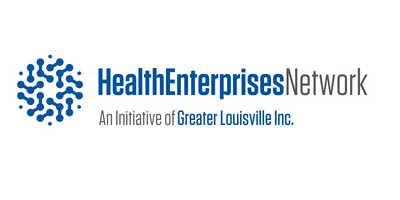President Joe Biden signed into law March 11 a $1.9 trillion COVID-19 relief bill that will fund increases in vaccine distribution, $1,400 cash payments to millions of Americans, extended unemployment benefits and support for caregiving, nutrition programs, health care and pensions.
This latest COVID relief measure contains most of the provisions of the package the president sent to Capitol Hill in January and includes elements strongly advocated by AARP. Congress finalized the bill on March 10 with a vote in the U.S. House of Representatives.
“The American Rescue Plan Act will greatly benefit Americans 50-plus at a time when too many people 50-plus are hurting as a result of the pandemic and economic fallout,” says Nancy LeaMond, AARP executive vice president and chief advocacy and engagement officer. “Too many lives have been lost and too many have experienced unprecedented financial hardship this past year.”
LeaMond pointed out that the bill “includes provisions to help people better afford their basic necessities, including direct stimulus payments, making health care more affordable, expanding paid leave tax credits, and increasing SNAP food assistance benefits and delivery of more meals to older Americans. Importantly, it also includes support for increasing COVID vaccine efforts, improving infection control in nursing homes, allowing more people to remain in their homes and communities, and reducing elder abuse.”
Stimulus payments
- Individuals earning up to $75,000 in annual income, heads of households earning up to $112,500 and couples with incomes up to $150,000 would be eligible for $1,400 in cash payments.
- Stimulus payments phase out as incomes climb higher. Individuals with annual incomes of $80,000 or more, heads of households earning $120,000 and over and couples with incomes of $160,000 or more would not receive any payment.
- Eligible dependents, including adult dependents, also would each get $1,400.
- People receiving Social Security, Supplemental Security Income (SSI), Veterans Administration (VA) and Railroad Retiree benefits would automatically receive the payment, even if they don’t normally file tax returns.
Vaccines and testing
- The Centers for Disease Control and Prevention (CDC) would receive $7.5 billion to improve the process of distributing and administering the COVID-19 vaccines, including help to state, local and tribal health departments.
- An additional $46 billion would go for testing, contact tracing, diagnosing and monitoring the pandemic, on the federal and state levels.
- The public health workforce would be bolstered with $7.6 billion, including resources for community health centers for vaccine distribution and testing.
- The Department of Health and Human Services and the CDC would get $1.75 billion to improve surveillance of new COVID-19 strains.
Unemployment insurance
- Emergency pandemic unemployment assistance would be extended until Sept. 6, and self-employed and part-time individuals could qualify for benefits.
- The extra weekly unemployment benefit would remain at $300.
- Tax relief is provided on up to $10,200 in income from unemployment benefits for households earning less than $150,000 a year.
- The total number of weeks individuals who are not able to return to work can collect benefits rises from 50 to 74.
Paid family leave
- Tax credits to businesses that offer paid leave to their employees would be extended to Sept. 30. That includes offering family caregivers the same leave available to parents and workers who need to care for themselves.
- The bill would not require businesses to offer paid leave.
Nutrition
- The 15 percent increase in the Supplemental Nutrition Assistance Program (SNAP), also known as food stamps, would be extended.
- The Community Supplemental Food Program — food packages for seniors — would receive $37 million to keep it available until Sept. 30, 2022.
- Older Americans Act programs, including nutrition services, home- and community-based services, vaccination outreach, social isolation and caregiver support, would receive $1.4 billion.
Housing
- Emergency rental assistance and other relief for the homeless would get $30 billion.
- $10 billion would be available for mortgage assistance.
Nursing homes
- Half a billion dollars would support the deployment of strike teams to nursing homes with diagnosed or suspected COVID-19 resident or staff cases.
- $200 million would go for infection control and the prevention and mitigation of COVID-19 in skilled nursing facilities.
Health care
- A two-year increase in Affordable Care Act (ACA) subsidies would help people afford health plans in the ACA marketplaces. People with incomes above 400 percent of the federal poverty level ($51,520 for an individual) would qualify for subsidies so they would not have to pay more than 8.5 percent of their annual income for their health care premiums.
- COBRA subsidies would be available through the end of 2021 to help workers who have been laid off or furloughed. Medicare-eligible individuals on COBRA would be reminded to transition to Medicare to avoid Part B late-enrollment penalties.
Pensions
- Severely underfunded multiemployer pension plans could get federal assistance from the Pension Benefit Guaranty Corporation to help protect the earned benefits of workers and retirees.
Tax credit
- The Earned Income Tax Credit for childless people would temporarily increase to $1,502 from $542 for 2021.
- The bill removes the age cap that limits the tax credit to workers under the age of 65.
Dena Bunis covers Medicare, health care, health policy and Congress. She also writes the “Medicare Made Easy” column for the AARP Bulletin. An award-winning journalist, Bunis spent decades working for metropolitan daily newspapers, including as Washington bureau chief for The Orange County Register and as a health policy and workplace writer for Newsday.

Recent Comments